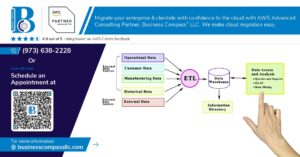Ever lost critical data that cost your team days of work and nearly gave you a heart attack? In data warehousing, that feeling of dread is all too familiar when someone accidentally drops an important table or overwrites production data.
Snowflake’s Time Travel and Fail-Safe features are your insurance policy against these data disasters. Think of them as your personal time machine and safety net for your data warehouse.
In this guide, we’ll walk through exactly how to use Snowflake’s Time Travel and Fail-Safe features to recover from those “oh no” moments that make your stomach drop. You’ll learn practical commands that can save your job when the inevitable happens.
But first, let’s talk about the difference between these two features – because using the wrong one at the wrong time could be the difference between a 5-minute fix and a support ticket nightmare.
Understanding Snowflake Time Travel
What is Time Travel and why it matters
Ever accidentally deleted important data? Snowflake’s Time Travel has your back. This feature lets you access historical data at any point within a set retention period. It’s like having a time machine for your database, giving you the power to undo mistakes and analyze data as it existed previously.
Setting Up Time Travel in Snowflake
A. Configuring Time Travel at account level
Setting up Time Travel in Snowflake starts at the account level. Just log into your admin account, run ALTER ACCOUNT SET DATA_RETENTION_TIME_IN_DAYS = X (where X is 0-90), and boom—you’ve set your default retention period. This applies to all new tables unless overridden.
Practical Applications of Time Travel
Practical Applications of Time Travel
A. Recovering from accidental data deletion
Ever deleted the wrong table? Been there. Time Travel saves your bacon when someone (maybe you) drops a crucial table or wipes important records. Just a simple query with your desired timestamp, and poof – your data reappears like magic. No panicked calls to IT or lengthy restoration processes. Just sweet, sweet relief.
B. Comparing data changes over time
C. Auditing and compliance use cases
D. Rolling back failed operations
Mastering Snowflake’s Fail-Safe Feature
A. How Fail-Safe complements Time Travel
Think of Fail-Safe as your backup’s backup. When Time Travel’s retention period ends, Fail-Safe steps in, storing your data for an additional week. It’s not as flexible—you’ll need to contact Snowflake support to recover data—but it’s your safety net when disaster strikes and Time Travel isn’t an option.
B. The 7-day Fail-Safe protection window
Fail-Safe kicks in after your Time Travel period expires, giving you a fixed 7-day window to recover lost data. Unlike Time Travel, you can’t browse or query this data directly. It exists solely as your emergency parachute when critical information vanishes and Time Travel can’t help.
C. When to leverage Fail-Safe vs. Time Travel
Always try Time Travel first—it’s faster, self-service, and doesn’t require support tickets. Fail-Safe is your last resort for catastrophic data loss that happened beyond your Time Travel retention. The recovery process takes longer and requires Snowflake support, but it might save your business in true emergencies.
Advanced Time Travel Techniques
Advanced Time Travel Techniques
A. Querying historical data with temporal expressions
Ever tried to recover that query you ran yesterday? With Snowflake’s temporal expressions, you can easily access historical data using simple AT or BEFORE clauses. No more panicking when someone accidentally drops that critical table—just rewind and grab what you need!
Snowflake’s Time Travel and Fail-Safe features provide powerful data protection capabilities that every data professional should leverage. From basic data recovery to complex historical analyses, Time Travel offers flexibility through simple configuration options while maintaining cost efficiency. Meanwhile, the Fail-Safe feature serves as your ultimate safety net for critical data, ensuring business continuity even in worst-case scenarios.
As you implement these features in your Snowflake environment, remember to balance retention periods with storage costs and establish clear policies for your organization. By thoughtfully integrating Time Travel and Fail-Safe into your data management strategy, you’ll significantly enhance your data resiliency while maintaining governance standards—giving you peace of mind that your valuable data assets remain protected and accessible when you need them most.




















